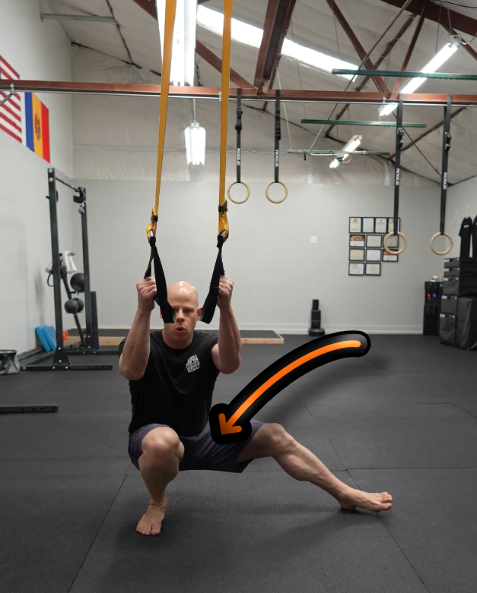Suspension Calisthenics Leg Training
Calisthenics is often credited as being an effective training method, but usually only for the core and the upper body. The rhetoric around physical conditioning is quite different when it comes to trending in the lower body. Many claim that there’s not enough resistance with calisthenics leg training to sufficiently build up the lower body. Others may say you need a high degree of proficiency to effectively practice lower body calisthenics.
These criticisms are certainly warranted as most conventional lower body training is too easy or too technically advanced to work for most people. Thankfully, suspension straps are a great tool for filling in the gaps that many people fall into. They offer greater degree of progression of both stability and mobility while also making it a lot easier to substantially load the muscles with an adequate amount of resistance.
The following exercises are some of my favorites and have done wonders for the lower body training of myself and my clients with nothing more than body weight.
Assisted compound exercises
These basic squat chain techniques use the suspension straps to provide support allowing for more control and stability. The goal with all of these techniques is to place progressively less weight on the straps so you’re hardly pulling on the handles over time. The less weight you have on your hands, the more work you place on your working leg.
Elevated split squat
These are a great progression from stand lunges and split squat that require more mobility and stability. They also place more weight on the working leg for resistance.
Assisted pistol squat
Pistol squats are a technique that often require more strength, stability, and mobility than many athletes have. Using suspension straps for assist allows you to adjust the demand on all three of those functional elements.
Lateral lunges
Like the pistol, these require more strength, stability, and mobility so using suspension straps make them more accessible while also making them more adaptable to your fitness level.
Hover lunges
The hover lunges place a lot of weight on your front leg while the rear foot “hovers” over the floor. They are also an effective hamstring exercise as you keep the knee bent to avoid the foot from touching the floor.
Lateral jump squats
Lateral jumping squats are an athletic technique where you effectively hop from one leg to the other. Try not to let the other foot touch the floor and do your best to squat with the leg you land on with as much range as possible.
Single-joint exercises
Single joint exercise exercises, place more emphasis on targeted muscle groups like the quadriceps and hamstrings. They are a great way to strengthen weak links in the lower body while also improving your aesthetic balance.
Hamstring curls
Suspension hamstring curls are one of the most complete and effective hamstring exercises in existence. They are an efficient exercise for working the knee flexors, but also use the hip extensor and the rest of the posterior chain for control and stability.
Hip extensions
The hip extension is very similar to the hamstring curl with the difference between that now your knees are locked, and you move with your hips. This exercise works the same muscles along the posterior chain, but place is more emphasis in the glutes and hip extensors.
Sissy squats
The sissy squad is one of the most effective quad, dominant exercises, not just in calisthenics, but in bodybuilding. It’s an exercise that uses an exceptional amount of range of motion in your quadriceps while also using your hips for stability and intensity.
Calf raises
Calf raises are leveled up to 11 and beyond when using suspension straps for support. You can do these either on a flat floor or on a calf block while using the suspension straps for support. The slight instability of the suspension straps requires more control and strength from your entire lower body, which places a significant amount of workload on your calves.










